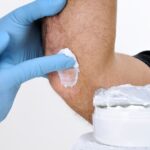A multi-centre cohort study has attempted to characterise patients who may not achieve an adequate response to biologics.
A prospective cohort analysis of patients with psoriasis taking biologics has identified characteristics linked with poor therapeutic response to multiple biologic agents.
The study, published in the Journal of the American Academy of Dermatology, found that female sex, shorter duration of psoriasis, earlier year of initiating a biologic and prior non-biologic systemic therapy use were significantly associated with multiple biologic failure.
“These insights may help risk-stratify psoriasis patients predisposed to higher rates of biologic switching or poor efficacy, identifying patients who may benefit from more frequent follow-up,” wrote the authors, led by Dr Joy Jin of the University of California at San Francisco.
The analysis included over 1000 patients from the US and Canada recorded in the multi-centre CorEvitas Psoriasis Registry, who started on their first biologic between 2015 and 2020. The average age was 49 years, around 44% were female and three-quarters were white. The average duration of psoriasis was around 12 years and almost one in three had comorbid psoriatic arthritis. Patients were followed up for at least 24 months.
Those who discontinued two or more biologics in that time due to inadequate efficacy – around 6% of the cohort – were considered to have multiple biologic failure. The 47% of the cohort who continued on their first biologic for two or more years were considered good clinical responders.
“Despite several biologic options, some patients cycle through multiple agents, leading to patient and provider frustration, increased depression and anxiety associated with treatment failure,” the authors wrote.
“These ‘multiple biologic failure’ [MBF] patients are not well-characterised, and the patterns of biologics attempted and sociodemographic or clinical features that may predict difficult treatment are incompletely studied.”
The researchers investigated the sociodemographic, clinical and self-reported quality of life variables in patients with multiple biologic failure, compared with those who had a good clinical response to a first biologic.
In addition to female sex at birth, shorter psoriasis duration, earlier year of biologic initiation and prior non-biologic systemic therapy as variables independently associated with multiple biologic failure, there was also history of hyperlipidaemia and Medicaid insurance. However, the authors noted the two latter had wide confidence internals suggesting greater caution was needed.
Interestingly, health-related factors such as smoking, alcohol use, BMI and the morphology and extent of psoriasis were not linked with multiple biologic failure.
The most common sequence of biologics in the multiple biologic failure group was TNF-α to IL-17 inhibitor, followed by IL-12/23 to IL-17 inhibitor and TNF-α to IL-12/23 inhibitor.
Those with multiple biologic failure started their first biologic more commonly between 2015 and 2017 whereas those with a good response more commonly started in 2018-2020.
While the study included biologics recently approved by the FDA, including guselkumab, tildrakizumab and risankizumab, the authors acknowledged that those who started earlier may not have had access to the newer, better biologics. They also had more time to develop multiple biologic failure.
The authors also acknowledged that the modest sample size of those with multiple biologic failure (65 people) meant there may not have been sufficient power to detect several important predictors, noting that “larger studies may shed further light on these relationships”.
We analyzed 1000+ patients with 2+ year f/u in a prospective cohort study using a real-world psoriasis registry. Most surprising to me was that we estimated the prevalence of “good response” to the first biologic at just 47.2%. That’s a lot of pts who end up switching! 2/
— Joy Jin (@joyqjin) July 25, 2023
Journal of the American Academy of Dermatology 2023, 24 July




